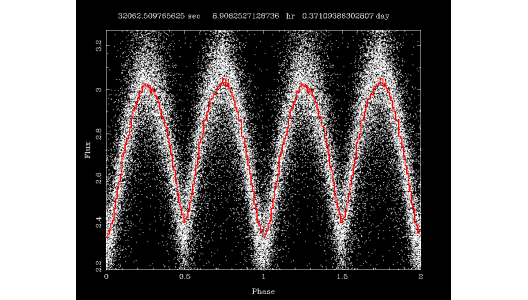Classifying Variable Stars using SuperWASP data
A new project created with the support of the DECS work package aims to classify the many types of periodic variable stars found in SuperWASP survey data using the Zooniverse citizen science platform.
The Wide Angle Search for Planets, SuperWASP, is the world's leading ground-based survey for transiting hot Jupiters (massive gaseous planets). Based at two sites, and operating from 2004–2013, the project accumulated 16 million images from 2800 nights, comprising 580 billion data points from 31 million unique objects outside the Galactic plane. To date, the project has announced the discovery of 160 exoplanets as well as many other potentially periodic objects.
Following a re-analysis of all of the light curves 0.8 million unique objects have been identified as having statistically significant but unexplained variabilities. This is where citizen scientists can play a key role in classifying folded light curves as resembling that of an EA or EB type eclipsing binary star, an EW type eclipsing binary star, a pulsating star or a generic rotational modulation.
The classification made by volunteers will contribute to catalogues of the various object classes allowing the range of observational parameters for each class to be identified. It is also hoped that this project will lead to the discovery of individual "keystone" objects with unique features.
The project can be found here and you are very welcome to join the 1,600 volunteers already working on the project.


 ASTERICS is a project supported by the European Commission Framework Programme Horizon 2020 Research and Innovation action under grant agreement n. 653477
ASTERICS is a project supported by the European Commission Framework Programme Horizon 2020 Research and Innovation action under grant agreement n. 653477